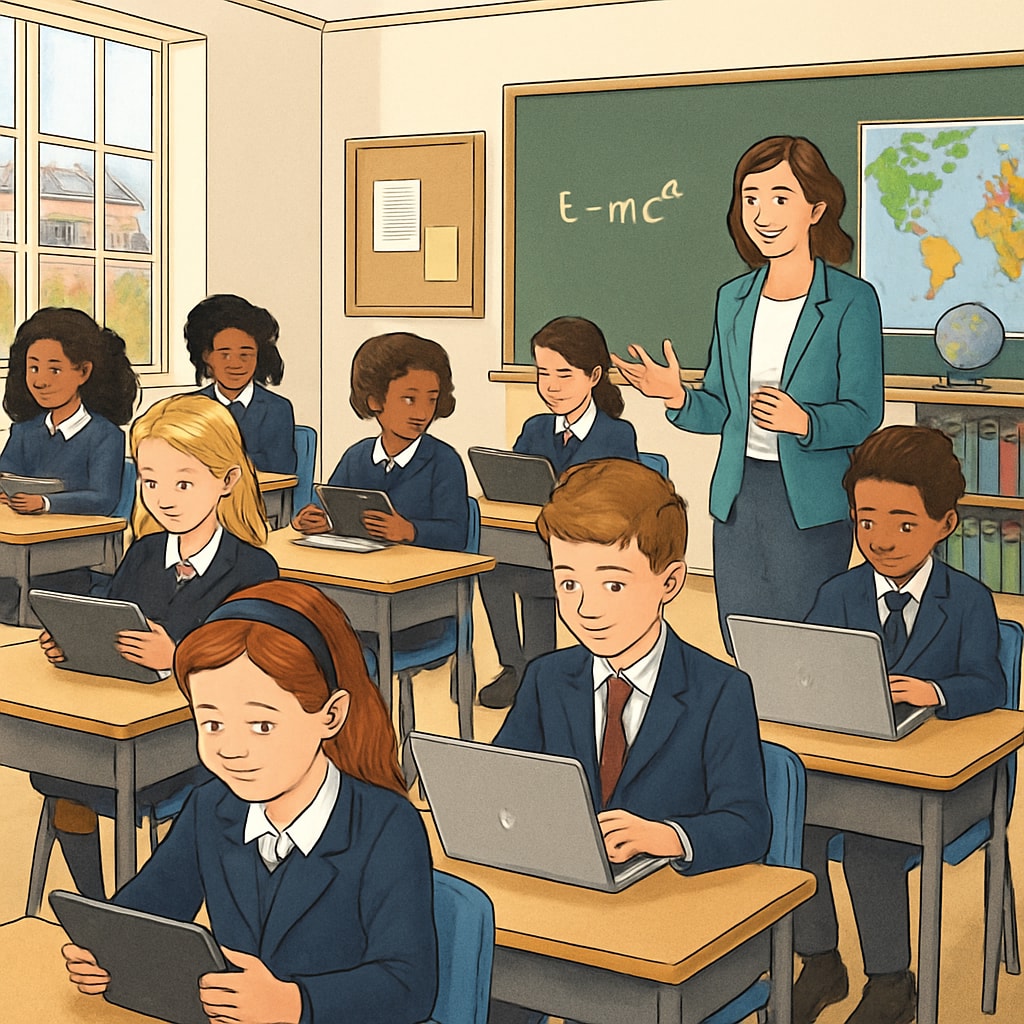As cell phone bans (policies restricting mobile device use) gain traction across public schools in multiple U.S. states, educators, parents, and students find themselves at odds over the role of technology in education. While proponents argue that such policies enhance focus and reduce distractions, critics claim they disregard students’ autonomy and digital needs. Interestingly, private schools often adopt more flexible approaches, highlighting a significant policy divide. This article explores the impacts of these bans, contrasts public and private school approaches, and examines how schools can strike a balance between maintaining a productive learning environment and respecting students’ rights.
Why Are Cell Phone Bans Gaining Momentum?
Cell phones have become ubiquitous in modern life, especially among students. However, their presence in classrooms has raised concerns about disrupted attention spans, increased cyberbullying, and diminished face-to-face interactions. As a result, many public schools are now implementing outright bans on cell phone use during school hours. For example, states like California and Maine have enacted legislation that prohibits students from using mobile devices in classrooms, except for educational purposes or emergencies.
Supporters of these bans argue that limiting access to cell phones fosters an environment conducive to learning. Teachers report fewer interruptions during lessons, while administrators note reduced disciplinary issues. Furthermore, studies indicate that students perform better academically when distractions such as smartphones are removed.

Public Schools vs. Private Schools: A Policy Divide
The contrast between public and private school policies is striking. Public schools, often bound by state regulations, tend to enforce uniform bans. On the other hand, private schools, which operate independently, frequently adopt tailored policies that reflect their educational philosophies and community needs. Some private schools integrate cell phones into the curriculum, using apps and digital tools to enhance learning.
This disparity stems from differences in funding, governance, and autonomy. Public schools must address the needs of diverse populations and comply with state mandates, while private schools can experiment with innovative approaches. The flexibility in private schools allows for a more nuanced understanding of technology’s role in education.

Balancing Student Rights and Educational Goals
While the intention behind cell phone bans is clear, they raise questions about student autonomy and preparedness for a digital future. For example, critics argue that students should learn how to manage technology responsibly rather than have it removed entirely. They also point out that cell phones can be vital tools for communication, research, and collaboration.
To achieve a middle ground, schools could consider implementing policies that allow limited cell phone use under strict guidelines. For example:
- Designating specific times or areas for phone use, such as during lunch breaks or free periods.
- Encouraging the use of educational apps and digital tools in structured lessons.
- Teaching students about digital citizenship and responsible technology use.
By embracing these solutions, schools can address the disruptive aspects of cell phones while leveraging their educational potential.
Conclusion: The Path Forward
The ongoing debates surrounding cell phone bans in public schools—and the contrasting policies in private schools—highlight the complexity of integrating technology into education. While removing cell phones entirely may reduce distractions, it risks alienating students and ignoring the realities of a digitally driven world. Schools must aim for a balanced approach that prioritizes learning while preparing students for responsible technology use. Ultimately, creating open dialogue between educators, parents, and students is the key to crafting effective and inclusive policies.
Readability guidance: This article uses short paragraphs, clear transitions, and lists to enhance readability. Active voice is prioritized, and long sentences kept to a minimum.


